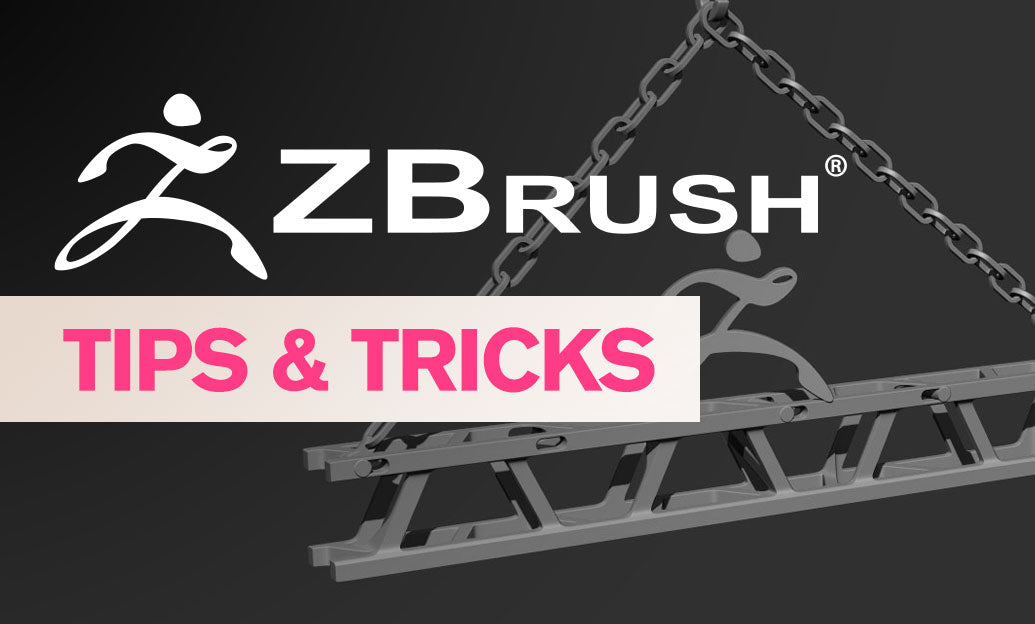Your Cart is Empty
Customer Testimonials
-
"Great customer service. The folks at Novedge were super helpful in navigating a somewhat complicated order including software upgrades and serial numbers in various stages of inactivity. They were friendly and helpful throughout the process.."
Ruben Ruckmark
"Quick & very helpful. We have been using Novedge for years and are very happy with their quick service when we need to make a purchase and excellent support resolving any issues."
Will Woodson
"Scott is the best. He reminds me about subscriptions dates, guides me in the correct direction for updates. He always responds promptly to me. He is literally the reason I continue to work with Novedge and will do so in the future."
Edward Mchugh
"Calvin Lok is “the man”. After my purchase of Sketchup 2021, he called me and provided step-by-step instructions to ease me through difficulties I was having with the setup of my new software."
Mike Borzage
AI and Augmented Reality: Revolutionizing Product Prototyping and Design Software
October 23, 2025 8 min read


Establishing the Intersection of AI, AR, and Product Prototyping
Current Trends and Definition of AI-Augmented Reality
In the rapidly evolving world of design software, the integration of **artificial intelligence (AI)** and **augmented reality (AR)** into product prototyping has emerged as one of the most compelling technological intersections. Recent trends indicate that traditional prototyping methods are being revolutionized through the adoption of intelligent algorithms and immersive visualizations. A significant development in this realm is the use of AI to analyze design parameters and optimize physical prototypes in real time, while AR enables designers to experience three-dimensional product representations in a simulated environment. This transformative integration not only shortens design cycles but also allows designers to experiment with innovative techniques by merging digital data with tactile design experiences. Furthermore, the advent of these emerging technologies has created an environment where conceptual ideas are swiftly translated into virtual prototypes that reflect real-world conditions, without the need to first invest in expensive physical models. The ongoing trend is witnessing a clear shift from traditional design methodologies towards approaches that interlace sensor-driven feedback and high-fidelity simulations with AI-powered analytic capabilities, offering a comprehensive ecosystem for product development.
Role of Emerging Technologies in Transforming Traditional Prototyping
The role of emerging technologies in this transformation is both profound and multifaceted. Innovations in **machine learning algorithms**, advanced computer vision, and sophisticated sensor technologies are merging to create a seamless interface between the physical and digital worlds. Designers are now leveraging powerful software tools that integrate real-time design feedback from AI-powered sensors, allowing them to continuously refine prototypes based on empirical data and predictive analytics. This integration ensures that iterative modifications are less time-consuming, more accurate, and cost-effective. Additionally, the utilization of AR applications facilitates a collaborative design process by enabling remote stakeholders to visualize and interact with digital prototypes. The expanded capabilities brought about by these developments have resulted in enhanced decision-making processes, as designers can now understand the nuances of product behavior in dynamic environments before any physical model is constructed. The increasing alignment of AI and AR within design and prototyping further supports a future where rapid innovation and agile product development become the industry norm, fostering creativity and efficiency in a landscape that is steadily moving towards greater digital integration.
Technological Framework and Integration
Key Components in AI and AR Integration
At the heart of this integration lie several key technological components that collectively underpin the successful amalgamation of AI and AR in contemporary design workflows. **Machine learning algorithms** form the backbone of this system by enabling predictive modeling and iterative optimization of prototypes based on accumulated data. In parallel, cutting-edge computer vision techniques work to interpret visual data captured by high-resolution sensors, allowing for the real-time rendering of augmented reality environments. Moreover, sensor technologies spanning from inertial measurement units to depth sensors all contribute to building the spatial understanding necessary for AR applications. The architecture typically involves a network of interconnected components, including data acquisition modules, robust processing units, and integrated software platforms designed to analyze this data efficiently. By harnessing the capabilities of these technologies, designers are able to create a feedback loop that not only improves accuracy but also enhances the visualization capabilities of prototypes. This systemic approach ensures that the tools used in the design process are both agile and scalable, accommodating the increasing complexity of modern product development. The interplay between multiple sensors and real-time data processing further refines the user experience, making the design paradigm both dynamic and responsive.
Software Tools, System Architecture, and Interaction Considerations
In addition to hardware and sensor components, the landscape of AI-augmented reality is bolstered by a suite of specialized software tools and robust system architectures that facilitate seamless integration. These platforms are designed to support not only the processing of voluminous data streams but also the real-time visualization that AR necessitates. Software frameworks often incorporate modular components, which allow for flexibility in the deployment of machine learning models and computer vision systems. Moreover, system architecture is frequently built upon scalable data pipelines that manage both historical and live data, ensuring that every iteration of a product prototype benefits from accumulated insights and predictive overrides. Designers benefit from this integrated approach as it streamlines workflows by automating routine tasks and enhancing quality control. There is also critical attention paid to the **seamless interaction between hardware and software**; for example, tight integration protocols between high-speed sensor arrays and optimized graphical processing units guarantee that feedback loops operate without perceptible lag. The utilization of bulleted approaches to list key functionalities includes:
- Real-time data acquisition and processing
- Accurate spatial recognition through advanced sensors
- Dynamic rendering of three-dimensional designs via AR
- Modular software integration for flexible design workflows
Designing Real-Time Feedback and Integration Strategies
A critical facet of the technological framework is the ability to provide designers with instantaneous feedback during the prototyping phase. Real-time design feedback mechanisms are powered by sophisticated algorithms that analyze sensor data and apply computer vision to correct and adjust digital representations on the fly. This setup allows designers to iteratively test and tweak their designs with remarkable precision. The synergy between hardware and software is fine-tuned through protocols that ensure minimal latency between data capture and visual rendering, facilitating a near-seamless user experience. Additionally, data pipelines constructed within these systems ensure that every piece of data is processed and stored efficiently to facilitate future iterations. Integration strategies often involve deploying modular software units that are capable of handling complex tasks such as pattern recognition, predictive simulation, and quality control automation. These strategies are further enhanced by the deployment of cloud-based systems, which provide scalability and remote accessibility, ensuring that intricate design processes are not bottlenecked by local computational limitations. The strategic alignment between sensor technologies, AI computational models, and AR display systems establishes a solid foundation for innovation and opens up new realms of possibilities in product visualization and design software. The overall framework becomes a testament to how advanced digital ecosystems can drive efficiencies and foster creative solutions in traditional prototyping methods.
Applications, Benefits, and Industry Impact
Enhanced Visualization, Reduced Prototyping Time, and Improved Decision-Making
The integration of AI and AR technologies in product prototyping has generated a wave of transformation within the design industry, profoundly impacting how products are developed and brought to market. Designers leveraged these advancements to reduce prototyping time by enabling immediate visualization and real-time modifications, thereby eliminating many of the iterative cycles that traditionally slowed down development. **Enhanced visualization** through augmented reality provides stakeholders with an immersive experience that bridges the gap between abstract concepts and their tangible counterparts. Moreover, the application of AI-assisted design tools supports improved decision-making by providing analytics that are both predictive and data-driven. This sophisticated interplay between visualization and analytics allows product developers to simulate various scenarios, optimize material usage, and anticipate design flaws before the production stage. In practical terms, the benefits include not only decreased time-to-market and cost reductions but also heightened levels of product accuracy and performance; a reality that is underpinned by a robust feedback loop generated by continuous sensor data and machine learning adjustments. Furthermore, the compelling advantages of integrating these technologies manifest in a paradigm where physical prototyping is supplemented, if not partially replaced, by digital simulations capable of delivering comparable or superior insights. These trends are further bolstered by bullet-pointed highlights:
- Accelerated prototyping cycles through real-time iteration
- Improved visualization leading to more precise design outcomes
- Analytics driven by AI resulting in more confident decision-making
- Cost optimization and efficient material usage
Challenges, Integration Strategies, and Future Trends in AI-AR Solutions
While the dramatic advancements offered by the convergence of AI and AR have revolutionized product visualization and prototyping, there exist several challenges that must be addressed to harness the full potential of these technologies. One of the primary obstacles lies in the technical complexity associated with aligning diverse hardware components and software systems to perform as a unified whole. The integration strategies require rigorous testing and fine-tuning, especially when it comes to ensuring that real-time feedback loops remain both reliable and scalable. Operational challenges may also arise from the steep learning curve involved in transitioning from traditional prototyping methods to AI-augmented environments, necessitating dedicated training and continuous update cycles in software platforms. Designers and engineers are sometimes required to adopt new workflows and protocols, which can lead to temporary disruptions in established processes. Notwithstanding these challenges, the long-term outlook remains exceptionally promising. Future trends indicate that advances in sensor precision, coupled with more refined machine learning algorithms and cloud-based platforms, will further escalate the capacities of these systems. The ongoing refinement of these tools is expected to drive innovation in material selection, manufacturing techniques, and overall design methodologies, promising an era where product development is not just faster but also significantly more accurate and efficient. The industry’s movement towards embracing these integrated solutions reflects a broader trend of digital transformation aimed at achieving higher standards of creativity and process efficiency in product development.
Conclusion
Recapitulating the Transformative Potential
The synthesis of AI and AR within the domain of product prototyping stands as a watershed moment for design professionals and engineers alike. By leveraging **AI-augmented reality** techniques, designers are now able to experience a dramatic elevation in the quality, speed, and accuracy of prototype development. The use of advanced computation, coupled with immersive visualization, has redefined traditional workflows, ushering in new methodologies that emphasize iterative, data-driven decision-making and real-time interaction with digital models. This confluence of technology not only accelerates the design lifecycle but also introduces an unprecedented level of precision in the transition from conceptual sketches to functional prototypes. The fundamental advantages—ranging from reduced prototyping cycles to enhanced visualization and informed decision-making—collectively underscore the transformative impact that these technologies are having on the industry. As every facet of the design process adapts to these innovations, the future of product development promises even greater integration and efficiency, setting the stage for breakthroughs in how products are conceived, refined, and ultimately brought to life.
Embracing AI-Augmented Reality and a Call to Future Innovation
Looking forward, the imperative for design professionals is clear: embrace the transformative potential that AI and AR technologies offer by integrating these solutions into every phase of product development. The industry is witnessing an accelerating trend where the integration of smart technologies is not simply a competitive advantage but a fundamental shift towards a more agile, efficient, and innovative design paradigm. By committing to a continuous learning process and adopting emerging digital tools, professionals can navigate the complexities of a rapidly evolving technological landscape. A multi-faceted approach that includes investing in state-of-the-art sensor technologies, ongoing professional development in AI methodologies, and the adoption of scalable software architectures is essential for staying ahead in the competitive market. This forward-thinking strategy not only catalyzes operational improvements but also fosters a creative environment where challenges are met with intelligent, data-driven solutions. As a call to action, design professionals are encouraged to explore these **AI-augmented reality solutions** and integrate them into their workflow, thereby ensuring that the next generation of product development is as innovative as it is precise. The convergence of such advanced techniques is poised to redefine the very fabric of design software, transforming both the products we create and the processes by which they come to life.
Also in Design News

Cinema 4D Tip: Optimizing Layer Management for Enhanced Workflow in Cinema 4D
October 23, 2025 3 min read
Read More
ZBrush Tip: Optimizing ZBrush Sculpting with the Insert Ice Brush for Realistic Ice Effects
October 23, 2025 2 min read
Read More
Bluebeam Tip: Implementing Custom Statuses for Enhanced Workflow Management in Bluebeam Revu
October 23, 2025 2 min read
Read MoreSubscribe
Sign up to get the latest on sales, new releases and more …


